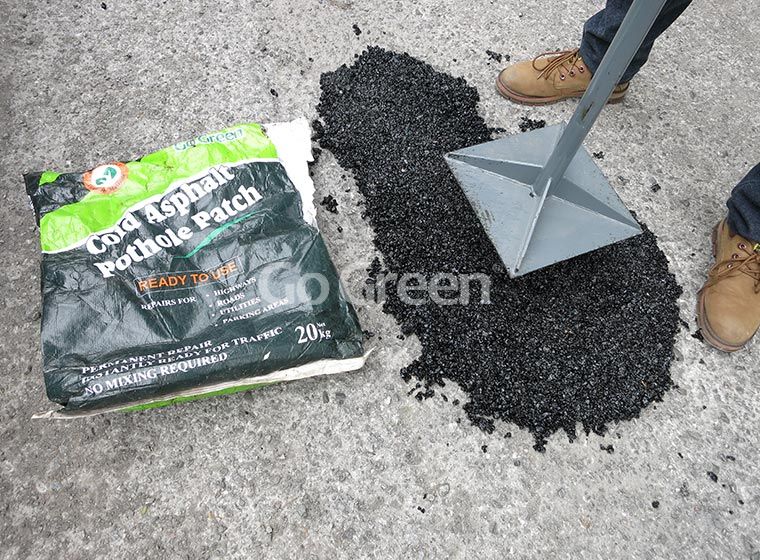Cold Mix Asphalt: Your Trick to Smooth, Resilient Surfaces
Cold mix asphalt stands as a trusted remedy for those looking for resilient and well-maintained surface areas in numerous weather condition problems. The adaptability and cost-effectiveness of cool mix asphalt provide an encouraging choice for roadway building and construction and upkeep.
Benefits of Cold Mix Asphalt
Cold Mix Asphalt uses various benefits in regards to cost-efficiency and environmental sustainability, making it a preferable option for various roadway building tasks - asphalt repair. One of the key advantages of cold mix asphalt is its ability to be produced and used at lower temperatures contrasted to traditional warm mix asphalt. This particular considerably decreases energy consumption during manufacturing and lowers greenhouse gas emissions, straightening with the press for more sustainable construction methods
Additionally, cold mix asphalt allows for higher adaptability in application, as it can be utilized in various climate condition and on various surface areas. Its flexibility includes the ability to be stocked for future usage, providing benefit and cost savings for maintenance jobs. The cost-efficiency of cold mix asphalt is additionally improved by its resilience and resistance to fracturing, which results in fewer repair work and longer-lasting roadway surface areas.
Application Strategies for Cold Mix
In the realm of road building, accurate application techniques play a critical function in making sure the effective execution of cool mix asphalt. Appropriate application of chilly mix asphalt is necessary for attaining long lasting, smooth, and resistant roadway surface areas.
Cold mix asphalt is created to be convenient at reduced temperature levels compared to warm mix asphalt. By employing the right techniques and paying interest to detail throughout application, chilly mix asphalt can supply durable, top notch road surface areas.

Key Attributes of Cold Mix Asphalt
When considering the attributes of chilly mix asphalt, its sturdiness and adaptability stand apart as vital attributes that add to durable road surface areas. Cold mix asphalt is recognized for its capability to stand up to varying climate problems, consisting of extreme chilly and warmth, without compromising its architectural integrity. This sturdiness is vital in stopping splits, potholes, and various other forms of wear and tear, inevitably prolonging the lifespan of the road surface area.
In addition, the adaptability of cool mix asphalt enables it to adjust to minor activities in the underlying surface area, such as soil shifting or small settlements. asphalt patch repair. This adaptability aids avoid the formation of cracks and improves the overall resilience of the roadway. Cold mix asphalt's capability to maintain its honesty under tension makes it an excellent option for high-traffic areas that experience regular heavy lots
In enhancement to sturdiness and flexibility, chilly mix asphalt is also cost-efficient and simple to use, making it a functional solution for numerous road asphalt patch repair surfacing requirements. Its capability to provide a smooth, durable surface while offering long-lasting efficiency makes it a prominent choice for roadway building and maintenance projects.
Upkeep Tips for Cold Mix
To make sure the longevity and optimal efficiency of cold mix asphalt surface areas, carrying out reliable upkeep methods is crucial. Routine evaluations are essential to determine any kind of indications of damage, such as fractures or splits, which should be fixed promptly to protect against additional damage. Sweeping the surface area regularly to eliminate particles and dirt assists protect against water merging and the formation of puddles that can compromise the asphalt gradually. Using sealer every couple of years can aid protect the surface from the damaging effects of UV rays and severe weather. In addition, making certain correct drainage is vital to avoid water from leaking beneath the asphalt and triggering architectural damage.
In cooler environments, it is essential to without delay eliminate snow and ice utilizing proper devices to avoid the asphalt from breaking as a result of cold and thawing cycles. Avoiding the usage of rough chemicals for snow elimination can aid protect the honesty of the cool mix asphalt surface area. By complying with these upkeep suggestions, you can extend the lifespan of your cold mix asphalt surface and keep it smooth and resilient for years to find.
Ecological Advantages of Cold Mix
Cold mix asphalt offers significant environmental benefits in terms of sustainability and source conservation. One vital environmental advantage of cold mix asphalt is its lower energy consumption throughout production compared to warm mix asphalt. Cold mix asphalt can be produced and used at lower temperature levels, decreasing the power needed to heat up the mixture. This leads to decreased greenhouse gas discharges and total energy use, making cold mix a much more eco-friendly alternative.
Additionally, chilly mix asphalt is usually made using recycled materials, such as reclaimed asphalt pavement (RAP) and recycled asphalt shingles (RAS) By incorporating these recycled products right into the mix, chilly mix asphalt assists minimize the demand for new accumulations and virgin asphalt binder. This not only saves all-natural sources yet additionally draws away waste from land fills, adding to an extra sustainable construction market.
Moreover, the capacity to store chilly mix asphalt for prolonged durations without the need for reheating minimizes the ecological effect of transportation and storage. This durability and flexibility make cold mix asphalt a much more sustainable option for roadway maintenance and building jobs.

Conclusion
Finally, cool mix asphalt supplies numerous advantages such as resilience, adaptability, and cost-effectiveness. Its application strategies and key features add to the production of smooth and resistant roadway surface areas. By following appropriate upkeep suggestions, chilly mix asphalt can stop fractures and splits, ensuring lasting performance. Furthermore, its ecological advantages, including the usage of recycled products and lowered power consumption, make it a sustainable option for preserving high-grade roadways with marginal ecological impact.